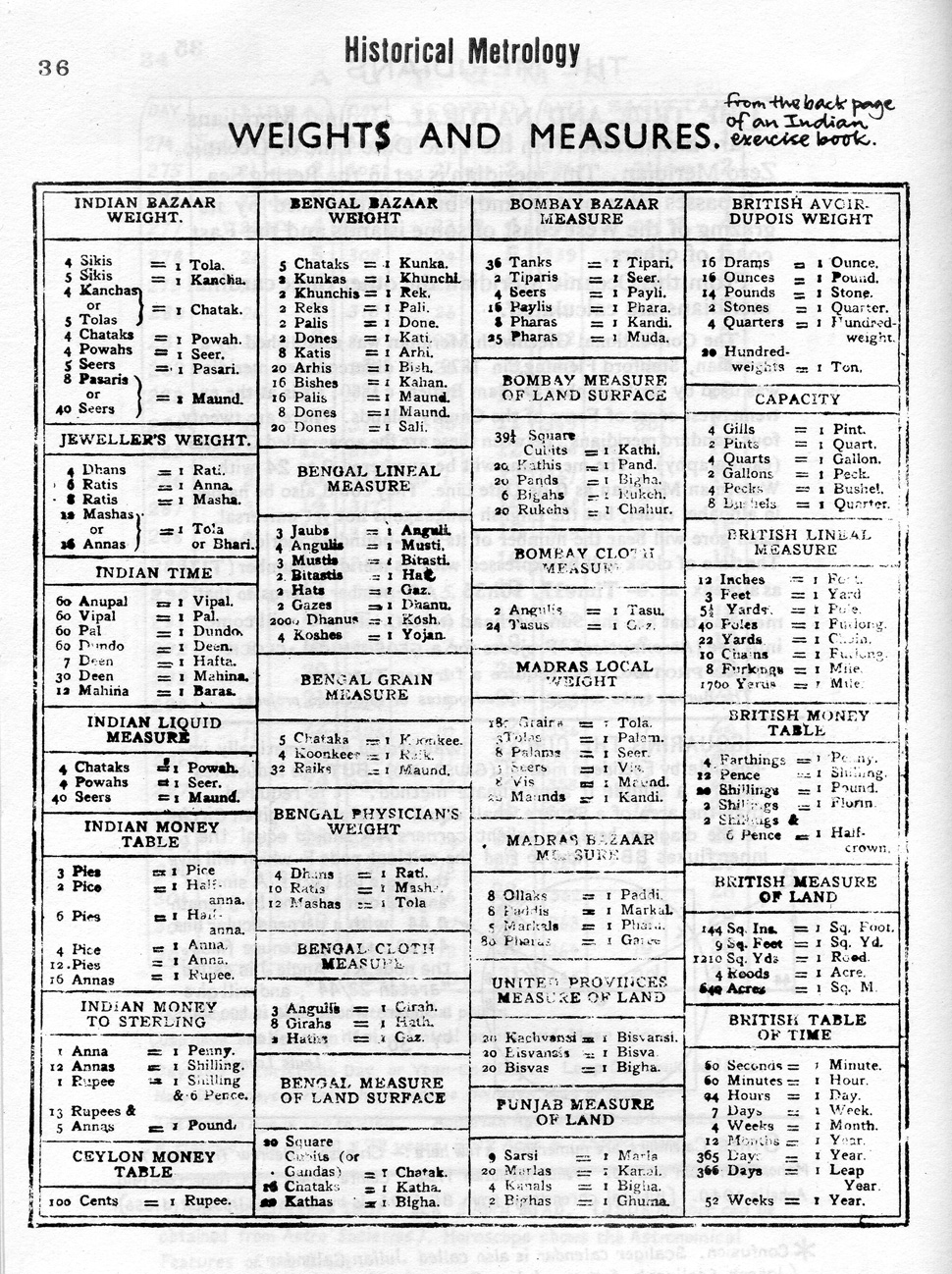



 |
 |
 |
 |
A correspondant in Norway has kindly sent in a sample of a folding foot with Norsk tommer that is still in use by joiners and forestry workers. Mechanics in industry however now use UK Imperial units and have scales with feet and inches on one side, decimal metric on the other. Enquiries in Copenhagen recently showed that British feet and inches are in common use throughout Denmark. The old to-fod rule of 24 tommen was known but no sample of it has yet been obtained.
Details quoted from Aschehrug's Dictionary gave the minor variations that have occurred during the last century.
In Norway (1824) the Fot was defined as the length of a one second pendulum x 12/38 at latitude 45° and equalled 12·352 of our inches. Before 1824 the Norwegian Fot and Danish Fod were equal at 12·362 inches each, but the Danish Fod is now 12·356 inches.
In Sweden, before 1863, their Fod was a little shorter than our foot at 11·685 inches. Afterwards it was made longer, 13·239″, - which looks like an adoption of the Northern Foot, but on the large side. No reasons have been given for the above changes: enquiries will continue.
The Northern Foot (or Belgic foot) identified by Petrie from a study of buildings along our eastern seaboard was later identified as originating from the Indus Valley, having "inches" of five wheat grains. It eventually became the Pied-du-Roi of Paris at 12·797 inches.
(Quoted from "The Civilisation of Ancient Egypt" by Paul Johnson, Weidenfeld & Nicholson):
The Egyptians made a bigger contribution to general knowledge in devising systems of measurement, which appealed to their empirical spirit. They were very observent people. They were the first to note the fact that all the parts of the body are (on average) constant in any individual in terms of their mutual relationships, irrespective of the individual's size relative to others. it was this observation of an invariable canon which lay at the heart of their extraordinary grasp of physical form in their painting and sculpture. But it also led them, very likely at an earlier stage in predynastic times, to an anthropometric system of measurement.
The basic unit was the armlength from elbow to thumb-tip, the cubit. This was divided into 6 palms or handbreadths (measured on the back across the knuckles), each made up of 4 fingers. The thumb was 1-1/3 fingers, which later became standardised as the Roman uncia or inch.
A hand of 4 fingers plus thumb was 5-1/3 fingers or 1-1/3 basic handbreadths. The distance from elbow to wrist was 4 handbreadths or as it was termed in Egypt the "two-thirds" (of a cubit); in other Mediterranean systems it was called the pous, or foot. The ordinary or "short" cubit (6 palms or 24 fingers) was supplemented by the "royal cubit", equal to 7 palms or 28 fingers - and, in our terms, nearly 21 ins.
For longer distances there was the "River Measure" of 20,000 cubits (6·8 miles). The basic land measure was the setjat or 100 cubits square, approximately 2/3 of an acre.
Footnote: Berriman, in his "Historical Metrology" suggests that the Royal Cubit was the diagonal of a square of side 1 remen; this would make it √2 remen, the remen being 20 digits.
In his "The Tragic Dynasty", the history of the Romanovs, Bergamini refers to a cannon which took a most unusual size of cannon-ball.
"One incongruous monument of Fedor III is the 40 ton Tsar Pushka, the largest cannon in the world at that time.
Cast in 1586, it was designed to take a ball 1 meter in diameter, but it was never operative, and it never left the Kremlin grounds."
Obviously designed by a prophet with a crystal ball, the metre being invented after the French Revolution of 1789...
it has been stated that the leopard cannot change its spots. At any rate one species of leopard - the ounce, peculiar to some small shops in South London, is of a very variable nature, and may be spotted in different places by Inspectors of Weights and Measures.
(From "FUN", 1887).
Table of Indian Weights and Measures, from the back page of an exercise book, under the Raj
